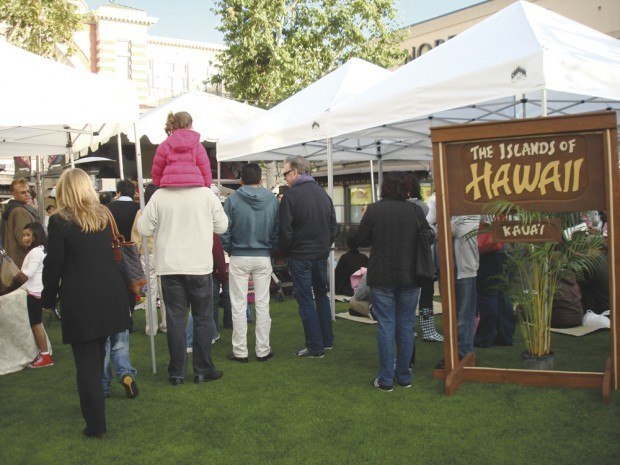LIHU‘E — Bringing up the rear, Kaua‘i was the caboose in the February visitor-arrival train, according to statistics released Tuesday by the Hawai‘i Tourism Authority. Falling 3 percent, visitor arrivals on Kaua‘i trailed behind O‘ahu and the Big Island, which
LIHU‘E — Bringing up the rear, Kaua‘i was the caboose in the February visitor-arrival train, according to statistics released Tuesday by the Hawai‘i Tourism Authority.
Falling 3 percent, visitor arrivals on Kaua‘i trailed behind O‘ahu and the Big Island, which each dropped around 1 percent, while Maui increased by some 7 percent, compared to February 2009.
The omission of the Pro Bowl was a contributing factor to the decline, said Kaua‘i Visitors Bureau Executive Director Sue Kanoho.
“Kaua‘i had a football and cheerleading clinic around the Pro Bowl event, which means Pro Bowl people traveled to Kaua‘i for those events,” she said.
And the reason for Maui’s expansion in visitor arrivals could be largely attributed to the addition of two new direct flights from Calgary and Oakland into Kahului.
Direct flights “make a huge difference,” Kanoho said.
University of Hawai‘i at Manoa Department of Economics Associate Professor Byron Gangnes agreed.
The recently added flights to Maui is giving them “a leg up,” he said.
In December, a seasonal WestJet direct flight was added to Lihu‘e from Vancouver, which is likely part of the reason Kaua‘i experienced a near 32-percent increase in February Canadian arrivals.
“Clearly the flight from WestJet is making a big difference for our Canadians coming to Kaua‘i,” Kanoho said, adding that the flight is scheduled to cease operations May 1.
The lack of a strong international market presence is a large factor contributing to Kaua‘i’s declining arrivals, Gangnes said. The island is extremely dependent upon Mainland visitors, especially those traveling from the West Coast, an area “hit the hardest during the housing bust.”
Kaua‘i has “no diversification” within the “travel mix,” and relies heavily upon one market rather than targeting others such as Asia, he said.
Of the 70,000 visitor arrivals in February on Kaua‘i, only around 8,000 were international travelers, as opposed to O‘ahu where nearly half of its travelers were from other countries, according to the HTA figures.
“It’s helpful to have different markets” and “not to have all the eggs in one tourism basket,” Gangnes said.
Kaua‘i Chamber of Commerce President Randy Francisco said he is still “encouraged by tourism,” and commends the “marketing and (other) efforts” utilized to bring more visitors to the island.
“The goal is to create awareness,” he said.
Continuing to boost that awareness is KVB, which along with the Hawai‘i Visitors and Convention Bureau “blitzed” five different U.S. cities since January and promoted Kaua‘i in major media outlets like “Eye on LA” and “View From the Bay,” Kanoho said.
“The county economic-stimulus programs have made a difference for our island, and clearly have kept Kaua‘i top of mind in the market, and I believe have helped us keep our island going,” she said.
Hotels are “still having a tough time” though, Francisco said.
In fact, during the month of January, Kaua‘i hotel occupancy was around 54 percent, according to statistics from Hospitality Advisors.
“It will take awhile to see visitors return,” Gangnes said.
• Coco Zickos, business and environmental writer, can be reached at 245-3681 (ext. 251) or czickos@kauaipubco.com.


